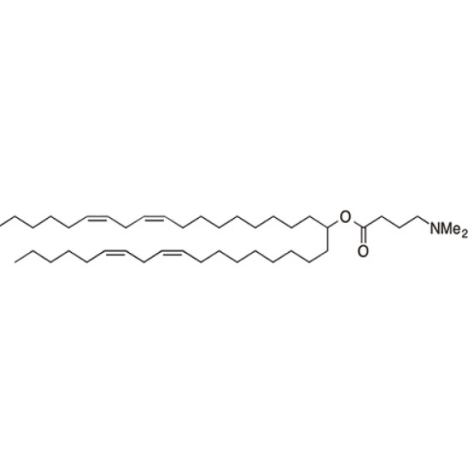| References: |
Technological advances in both siRNA (small interfering RNA) and whole genome sequencing have demonstrated great potential in translating genetic information into siRNA-based drugs to halt the synthesis of most disease-causing proteins. Despite its powerful promises as a drug, siRNA requires a sophisticated delivery vehicle because of its rapid degradation in the circulation, inefficient accumulation in target tissues and inability to cross cell membranes to access the cytoplasm where it functions. Lipid nanoparticle (LNP) containing ionizable amino lipids is the leading delivery technology for siRNA, with five products in clinical trials and more in the pipeline. Lipid nanoparticles (LNPs) formed by an ionizable cationic lipid (DLin-MC3-DMA), helper lipids (distearoylphosphatidylcholine, DSPC, and cholesterol), and a poly(ethylene glycol) (PEG) lipid have been identified as very promising delivery vectors of short interfering RNA (siRNA) in different clinical phases. DLin-MC3-DMA [14], which are 100-fold and 1000-fold more potent, respectively, in silencing of a hepatic gene (Factor VII) in comparison to the previous generation lipid DLin-DMA (1,2-dilinoleyloxy-N,N-dimethyl-3-aminopropane).The ED50 (median effective dose) for LNP containing DLin-MC3-DMA to silence Factor VII in mice and TTR in non-human primates was 0.005 mg/kg and 0.03 mg/kg, respectively. One of the key findings from these studies was the optimum lipid pKa value of 6.2–6.5 as a dominating factor in determining hepatic gene-silencing activity in vivo. DLin-MC3-DMA, having a pKa of 6.44, is currently the most active ionizable lipid being used in clinical trials. |























